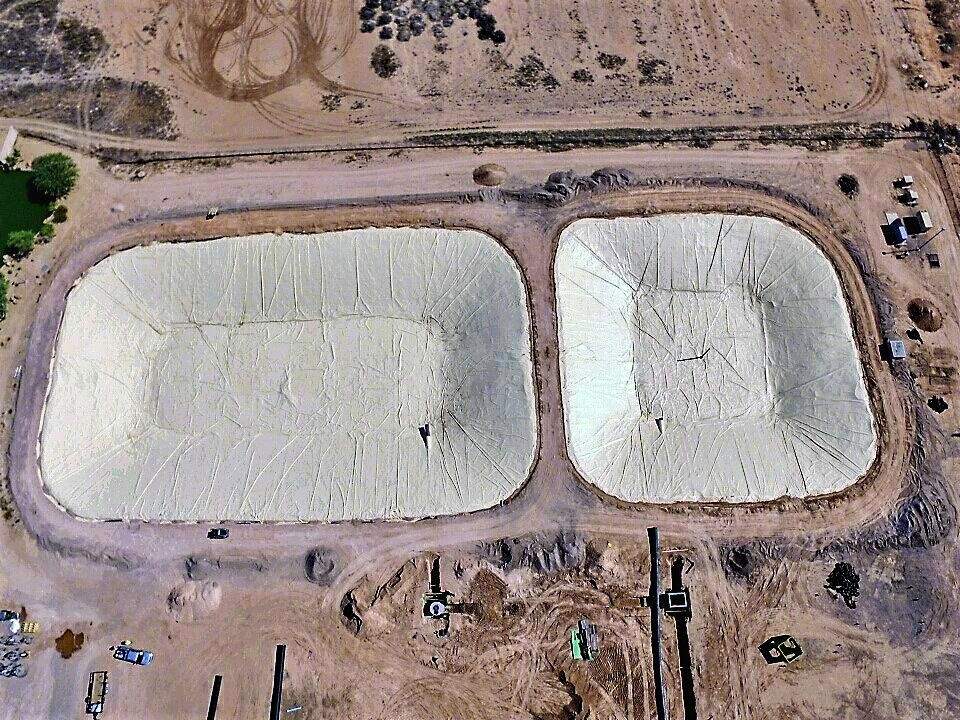Anaerobic lagoons are highly specialized and designed lagoons that are used to hold and process animal waste, particularly that of cows and pigs. The waste from dairies and pig farms (also known as concentrated animal feeding operations or CAFOs) can be highly problematic if not handled correctly. Almost all livestock lagoons are anaerobic now, which means “without oxygen” and can hold and treat the wastewater for 20 to 150 days. The anaerobic respiration process works best when the lagoon is from 8 to 15 feet deep and it works on the same concept as a septic tank. By using the process of anaerobic respiration, the organic compounds are converted into carbon dioxide and methane. While in the lagoon the solids separate from the liquids, and the sludge that settles at the bottom eventually must be removed and/or processed. Both the sludge and the water can be dangerous if they are not handled correctly.
CHALLENGES
The United States’ Environmental Protection Agency is responsible for implementing stronger regulations of CAFOs under the Clean Water Act of 1972, which has impacted how dairies and pig farms handle their waste (regulations may also vary by state as well). The EPA has issued guidelines for the proper building and maintaining of anaerobic lagoons to minimize the harmful effects of that much animal waste on the environment and on residents’ health. These lagoons have been known to emit gas emissions, which can be very dangerous. The gas emissions of ammonia, hydrogen sulfide, methane, and carbon dioxide are a product of the slurry itself. Another environmental challenge is lagoon overflow, which can spread harmful bacteria, pesticides, animal antibiotics, additional estrogens, heavy metals, and protozoa into the groundwater supply and surrounding areas. Cracks, improper construction, increased rainfall, or stronger than normal winds can all cause lagoon overflow.
LAGOON LINERS
One of the most effective ways to prevent these potential challenges from happening is to install the proper lagoon liner that will allow for the containment of manure and runoff of agricultural waste without contaminating the land or groundwater itself. Thus, lagoon liners have become a requirement for many farms and dairies. With the proper containment and systems in place, lagoon liners can also potentially allow for reuse of manure for renewable energy. (Some researchers are now developing methods and technology that will allow renewable natural gas to be harvested from the manure and used to heat and power homes and certain industries.)
Providing an appropriate liner for the lagoon can prevent the problematic wastewater seepage into the groundwater. The lagoon should be lined with an impermeable material such as reinforced polypropylene, which has excellent leak resistance with a highly formulated thick coating that provides excellent abrasion resistance and weld strength. The thread in Western Liner’s reinforced polypropylene also provides excellent tear and puncture resistance as well. In addition to using the proper liner, there has also been an emphasis on the research and development of environmentally sound technologies that will allow for safer containment and recycling of CAFO waste. Western Liner and its parent company Western AG Enterprises specialize in agriculture and have worked with the Natural Resources Conservation Service and EPDA to understand the specific and demanding needs of dairies and farms. They also assist the environmental engineers to know what type of liner will work the best and help assist with any penetrations such as pipes that may be involved with the lagoon. With such specific materials and expertise, lagoon liners are the best solution to contain most anaerobic lagoons.


